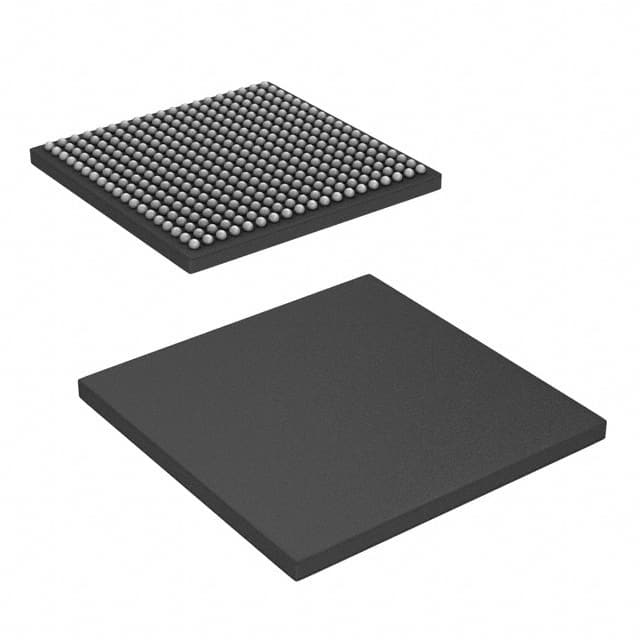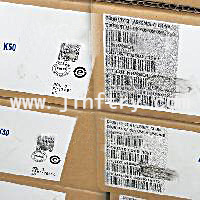What is TMS320C6424ZWT7,TMS320C6424ZWT7 Datasheet


What is TMS320C6424ZWT7
Texas Instruments Part Number TMS320C6424ZWT7(Embedded - DSP (Digital Signal Processors)), developed and manufactured by Texas Instruments, distributed globally by Jinftry. We distribute various electronic components from world-renowned brands and provide one-stop services, making us a trusted global electronic component distributor.
TMS320C6424ZWT7 is one of the part numbers distributed by Jinftry, and you can learn about its specifications/configurations, package/case, Datasheet, and other information here. Electronic components are affected by supply and demand, and prices fluctuate frequently. If you have a demand, please do not hesitate to send us an RFQ or email us immediately [email protected] Please inquire about the real-time unit price, Data Code, Lead time, payment terms, and any other information you would like to know. We will do our best to provide you with a quotation and reply as soon as possible.
TMS320C6424ZWT7 Specifications
- Part NumberTMS320C6424ZWT7
- CategoryEmbedded - DSP (Digital Signal Processors)
- ManufacturerTexas Instruments
- DescriptionIC DSP FIXED-POINT 361-NFBGA
- PackageBulk
- SeriesTMS320C642x
- TypeFixed Point
- InterfaceEBI/EMI, HPI, I²C, McASP, McBSP, UART, 10/100 Ethernet MAC
- Operating Temperature0°C ~ 90°C (TJ)
- Mounting TypeSurface Mount
- Package / Case361-LFBGA
- Supplier Device Package361-NFBGA (16x16)
- Clock Rate700MHz
- Non-Volatile MemoryROM (64kB)
- On-Chip RAM240kB
- Voltage - I/O1.8V, 3.3V
- Voltage - Core1.05V, 1.20V
- Package_case361-LFBGA
Application of TMS320C6424ZWT7
TMS320C6424ZWT7 Datasheet
TMS320C6424ZWT7 Datasheet , Bulk,TMS320C642x,Fixed Point,EBI/EMI, HPI, I²C, McASP, McBSP, UART, 10/100 Ethernet MAC,0°C ~ 90°C (TJ),Surface Mount,361-LFBGA,361-NFBGA (16x16),700MHz,ROM (64kB),240kB,1.8V, 3.3V,1.05V, 1.20V
TMS320C6424ZWT7 Classification
Embedded - DSP (Digital Signal Processors)
FAQ about Embedded - DSP (Digital Signal Processors)
-
1. What is embedded DSP?
Embedded Digital Signal Processor (EDSP) is a processor specially used for signal processing. It has been specially designed in terms of system structure and instruction algorithm, and has high compilation efficiency and instruction execution speed. Embedded DSP processors are good at high-speed implementation of various digital signal processing operations, such as digital filtering, spectrum analysis, etc.
Embedded DSP processors have been specially designed for system structure and instructions, making them suitable for executing digital signal processing algorithms, with high compilation efficiency and high instruction execution speed. This special design includes the optimization of DSP hardware structure and instructions, so that it can efficiently handle complex signal processing tasks. -
2. What is built-in DSP?
Built-in DSP is a technology that combines digital signal processing (DSP) functions with power amplifiers. It not only has the power amplification function of traditional amplifiers, but also accurately processes and adjusts audio signals through DSP chips to provide a higher quality music experience.
The core advantage of built-in DSP lies in its powerful audio processing capabilities. Through DSP technology, audio signals can be optimized and managed to achieve active frequency division, delay processing, EQ debugging and other functions, thereby improving the performance of the audio system and making the sound clearer and more pleasant to listen to.In addition, DSP amplifiers also support parameter adjustment through computers, mobile phones and other devices, providing more flexible audio management solutions. -
3. What is the difference between DSP and FPGA?
The main difference between DSP and FPGA lies in their design purpose, structure, programming method and applicable scenarios.
First of all, there are fundamental differences between DSP and FPGA in design purpose and structure. DSP (digital signal processor) is designed for digital signal processing, with a dedicated instruction set and hardware accelerator for efficient processing of digital signals. FPGA (field programmable gate array) is a programmable logic device that can be programmed according to user needs to realize various digital logic circuits. FPGA contains a large number of logic gates and triggers inside, usually using a lookup table structure, while DSP uses a Harvard structure, with separate data bus and address bus, allowing programs and data to be stored separately to increase processing speed.
In terms of programming methods, DSP is usually programmed through assembly or high-level languages (such as C/C++) and has a complete C language compiler. FPGA is designed through hardware description language, which has high flexibility but high programming complexity. DSPs are relatively easy to program because they are designed for specific types of computing tasks, while FPGAs offer greater flexibility but are more complex to program.
Finally, DSPs and FPGAs are suitable for different application scenarios. DSPs are suitable for tasks that require high-speed processing of large amounts of digital signals, such as communications, audio processing, image processing, and other fields. FPGAs are suitable for applications that require highly customized hardware acceleration, such as high-performance computing, complex signal processing, and more. The flexibility of FPGAs makes them more advantageous in projects that require frequent changes in functionality, while DSPs perform better in applications that require efficient processing of fixed algorithms.







